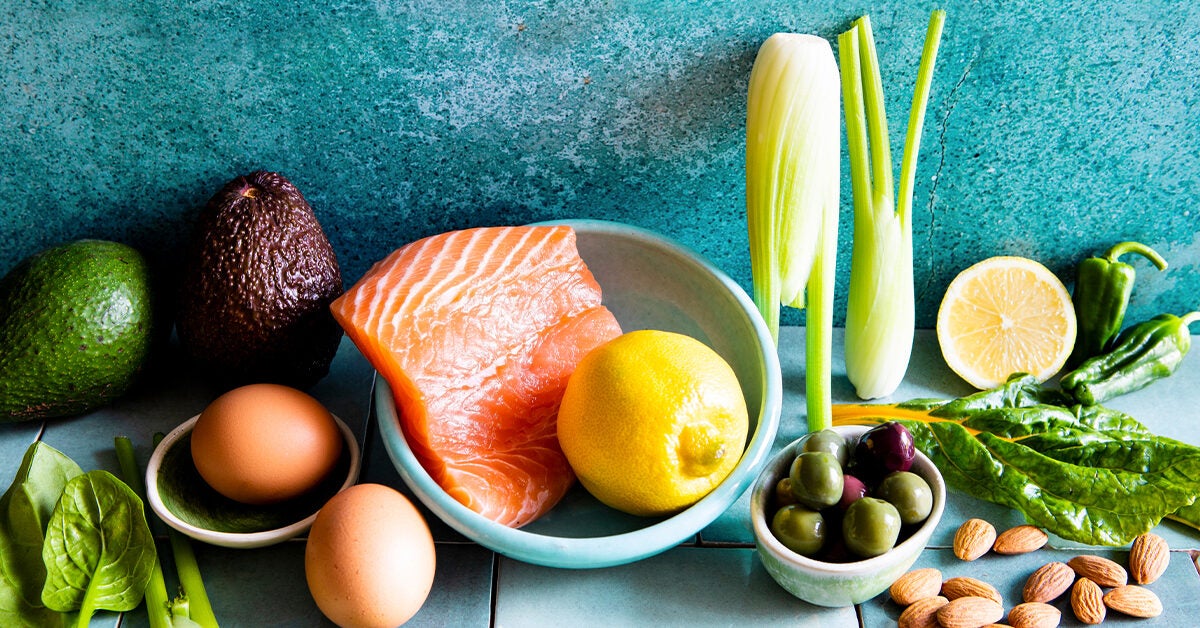Keto 101: A Complete Beginner’s Guide To The Keto Diet!
To not have heard the word keto or someone who was on a keto diet in this day and age is considered living right under a rock. While you may nod along, pretending you know what all that jazz is about, there’s great science and health benefits you should definitely know. Alternatively, if you’re someone who’s tried the diet or plans too, stick around for some cool information you may be able to take away!
In this blog, we define the science of ketosis behind the infamous keto diet plans, and answer all your frequently asked questions about it. Whether you’re a beginner or consider yourself a keto pro, let’s take you through the Atmosphere guide for this magic meal plan!
What is Ketosis?

According to WebMD, “Ketosis is a process that happens when your body doesn't have enough carbohydrates to burn for energy. Instead, it burns fat and makes things called ketones, which it can use for fuel.” When ketone (water-soluble molecules produced from fatty acids by the liver) increase in your blood and urine, your body is said to be in the metabolic state of ketosis.
If your body finds a dearth of glucose to utilise for fuel, an additional source of energy is created using this process, while maintaining its acid-base homeostasis.
What is a keto diet?
According to the American Academy of Pediatrics, the ketogenic diet is a high-fat, adequate-protein, low-carbohydrate dietary therapy that in conventional medicine is used mainly to treat hard-to-control (refractory) epilepsy in children.
We all know and understand that our body needs energy and fuel to run. But in the case of low supply of sugar (glucose) and carbohydrates, what can it use instead to keep going? Yes, you guessed it right- Fat! Elevated ketone bodies are greatly increased using this process and the easiest process to reach this state using your food is what is known as the Keto Diet.
What food do you eat in keto?

Based on this information, you can make out how most keto diet plans include low carb food and simple ingredients. To get started, try stocking up on the following and curating your very own recipes:
- Meat and Seafood: Fresh meats and chicken are known to be protein-rich and mostly no-carb. This will protect your muscles while your body is adjusting to ketosis. Feel free to also include some eggs for protein while you’re at it too! As for seafood- Vitamin-B and mineral rich while also being nearly no-carb, fish make up for very safe options for a fool-proof keto formula!
- Dairy: From being an ideal low carb ingredient and high-fat accompaniment, cheese like brie, cottage, cream, mozzarella etc. make for great keto meals. Other dairy products you use include: unsweetened plant-based milk, and plain greek yoghurt.
- Vegetables: Packed with vitamins, iron, and anti-inflammatory, green leafy vegetables are perfect to add bulk to your means without almost any carbs! Examples: spinach, kale, lettuce, cabbage, lemongrass, peppers, zucchini, and high-fat veggies like avocado etc. Make sure to avoid potatoes, onions, corn, and beets for their carb content! For adding some vegetarian sources of protein, you can also try out tofu and tempeh.
- Plant-based fat sources: If you’re looking for more vegan options to bring the goodness of healthy fat in your keto diet plan, try out coconuts, nuts, olive oil, olives, seeds, etc.
🤝 Atmosphere Tip: Looking to soothe your sweet tooth without messing up your keto diet plan? Try our perfect for keto desserts including the rich and decadent fudge and the creamy and flavourful cheesecakes! While the former work as a source of healthy fat, the latter makes use of plant-based cheese and nuts.
Advantages and Disadvantages

Keto benefits you should know
- Reduced ‘bad’ LDL cholesterol levels
- Lowered blood pressure
- Helps with lowering blood sugar and insulin levels
- Increased levels of ‘good’ HDL cholesterol
- Reduction in the number of blood triglycerides (fat molecules)
- Improved heart health
- Abdominal fat reduction through reduced carbohydrate intake
- Inflammation lowered
Keto Disadvantages
- The Keto Flu: transition from glucose to fat consumption by body (ketosis) leading to fatigue, flu-like symptoms, and a general feeling of being unwell; lasts for just a little while.
- Diarrhoea: Due to the lack of fiber and dairy intolerances
- Ketoacidosis: Too much ketones produced in the body during ketosis can make it acidic in some case leading to damage to organs
- Reduced athletic performance: lack of glucose and just functioning on ketones for energy during high-energy sports can lead to severe fatigue
- Risk of heart disease
- Loss of muscle mass
Is keto good for weight loss?

A keto body, or a body in ketosis is one that is metabolising fat in the presence of a low-carb diet and the absence of glucose/sugar. And as research suggests, most weight loss seen (especially in men) as a result of these low carb diets is through abdominal fat. So, in simple words, YES!
Moreover, a keto diet plan for weight loss also leads to an automatic reduction in appetite, by eating more protein and thus far fewer calories. This is perfect for people who give up on restrictive diets due to hunger and starving issues. Do it right, in consultation with your GP or nutritionist, and you can preserve your muscle mass, lose fat, and improve various markers of disease.
🤝 To sum up: While most people associate keto with bacon and cheese, we at Atmosphere believe an accessible diet plan should also include vegan options! Ketosis can healthily be achieved via mostly low-carb vegetable and a healthy fat-based protocol. By curating your very own meal plans through some of our listed healthy fat sources, any one can ace the keto body. A good place to start? Our cheesecakes with a healthy fat-rich nut base and our vegan fudges made with no-sugar and almond/hazelnut butter!



